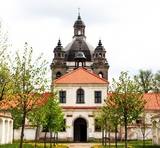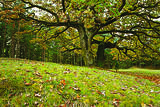| Nr | Name | Beschreibung |
|---|---|---|
|
Die Tour führt durch Nationalparks und Naturschutzgebiete von internationaler Bedeutung entlang der Küste. Unterwegs werden kleine reizvolle Städte, einige historische Sehenswürdigkeiten und traditionelle Dörfer besucht. Auf der Tour erkunden Sie seltene und geschützte Pflanzen und örtliche Traditionen, sowie genießen wunderbare Landschaften, die Wildnis und Einsamkeit. Im Nationalpark Kemeri gehen Sie auf einem Pfad im Moor, sehen wilde Wiesen und können einen Vogelbeobachtungsturm neben dem See Kanieris besteigen. Danach erkunden wir den Naturpark des Sees Engure, wo man 22 Orchideenarten finden kann. Am nächsten Tag führt die Tour Richtung den Nationalpark Slitere, der das ehemalige Gebiet des Baltischen Eisstausees und des Littorina Meeres ist. Sie besuchen den Kiefernpfad des Kaps von Kolka und den Pfad des Sees Peterezers, in dessen Landschaft man die Bildungsperioden der Ostsee sehen kann. Weiter führt die Tour zum Pfad des Moores Stikli, das das größte Moorgebiet in Lettland ist. In Uzava entdecken Sie die größte graue Düne in den baltischen Staaten und die wilden Ufer des Flusses Venta, aber danach – die reizvolle Stadt Kuldiga, die mit ihrer gut erhaltenen hölzernen Architektur und dem breitesten Wasserfall in Europa bekannt ist. Weiter führt die Tour durch das Urstromtal Abava, das von tauenden uralten Eismassen gebildet worden ist. In Sabile können Sie an dem berühmten Weinberg halten, der der nördlichste Weinberg der Welt ist, und an dem Pflanzenpfad von Sabile, aber weiter auf der Tour – an der größten Eiche in Europa. Auf dem Weg nach Riga unternehmen Sie eine Wanderung auf dem 5 km langen Pfad des Moores von Cena, das Nieder-, Hoch- und Übergangsmoore, sowie die dort waschenden Pflanzen charakterisieren. |
||
|
Atrodas stāvā Tebras (Dzirnavdīķa) ziemeļu krasta augšdaļā (Skolas ielā 1). Ēka celta 19. – 20. gs. mijā kā Aizputes muižas jaunā kungu māja. Tajā atrodas Aizputes novadpētniecības muzejs (no 1999. g.) un Aizputes TIC. Ekspozīcija par Aizputes pilsētas un apkārtnes vēsturi tiek pasniegts saistošā veidā, ļaujot apmeklētājiem iejusties vairāku gadu desmitu seno notikumu atmosfērā. |
||
|
Auf dieser Tour wandern Sie der litauischen Ostseeküste entlang durch die Kurische Nehrung von Nida nach |
||
|
It is possible to look at African ostriches of different ages; to listen to stories about or of ostriches. It is possible to buy crafts made of ostrich feathers, skin and grease, fresh ostrich eggs. |
||
|
Litorīnas jūras laikā (pirms ~ 6000 gadiem) Saleveres Salumegi kalns bija sala, bet mūsdienās tas kā izteikta kāple (īpaši - ziemeļu pusē) paceļas virs Piejūras līdzenuma. Salumegi ziemeļu pusē slejas 4 - 5 metrus augsts kaļķakmens atsegums – silūra perioda (> 400 mlj. gadu) koraļļu rifa paliekas, kuru noskalojuši Litorīnas jūras viļņi. Atseguma piekājē izplūst Acu avots, kam piedēvē dziednieciskas īpašības. Salumegi apskates nolūkos izveidota lokveida taka (1,5 km). No kalna augšas paveras labs skats uz Matsalu līci. Šeit atradies arī sens pilskalns. |
||
|
Bijušā piecstāvīgā metāla skatu torņa apkaimē plešas Lemmjegi upes palieņu pļavas. Netālu atrodas kādreizējā Oksas kroga (Oksa kõrts) vieta, kur saglabājies iespaidīgs manteļskurstenis. Apkaimes apskatei izveidota 0,8 km gara koka laipu taka. |
||
|
This is a “peripheral” island in the Bay of Finland, 9 km from the Dirhami port. The special fact about this island is that it offers fields of juniper, a rocky and grassy seashore that is around 2 km long, and limestone cliffs that are a few metres high along the northern and the eastern shores of the island. These are designated with the words Osmussaare pank.
|
||
|
Ein hervorragendes Sakralensemble im Barockstil (17 – 18 Jh.), eine Kirche und ein tätiger Nonnenkloster. |
||
|
Der originelle Töpfer lädt zum Besuch ein, er bietet eine Führung an, zeigt seinen Arbeitsprozess, lässt die Besucher am Entstehungsprozess teilhaben und lädt auch Interessenten ein, beim Öffnen des Brennofens dabei zu sein. Man kann hier auch Töpferarbeiten erwerben. |
||
|
Saimniecība "Dižgāļi" Alsungā nodarbojas ar bioloģisko lauksaimniecību, gaļas liellopu audzēšanu un aitu audzēšanu. Apmeklētājiem ir iespēja aplūkot saimniecību, tajā esošos dzīvniekus, kā arī iegādāties svaigo produkciju. Saimniece pastāstīs par vietas vēsturi, kā arī pacienās viesus ar vistas zupu. |
||
|
The farm specializes on growing and reprocessing cranberries and blueberries. They offer tastings of the products and purchasing those in a small local shop, as well as a 2-hour-long excursion around the farm. |
||
|
On the third Saturday of each month from 9:00 to 13:00 the Green market takes place in Gulbene, where there are gathered outworkers, craftsmen and farmers from different districts of Latvia. There are offered goods made by the outworkers, seasonal vegetables and fruit, as well as beauty and design products, including other useful household and pretty goods. |
||
|
Die Gaststätte und Konditorei befindet sich an der Landstraße Vidzeme in Ieriķi, in Nähe der Naturpfade Cecīļi und Ieriķi. Nebenan befindet sich das Tourismusinformationszentrum. Es werden traditionelle und nach eigenen Rezepten zubereitete Gerichte angeboten. |
||
|
Die Molkerei von Talsi wurde 1922 bei dem Zusammenschluss einiger anderen Molkereien gegründet. Später entstand auf dieser Basis die “Talsu piensaimnieks” AG. Eins der bekanntesten Produkte des Betriebs ist der Käse "Talsu ritulis" (der Käselaib von Talsi). Die Produktion von der “Talsu piensaimnieks” AG – Milch, Kefir, Quark, Butter, Käse u.a. kann man in einem zum Betrieb nahegelegenen Geschäft „Piena sēta” kaufen. |
||
|
Laidze Parish Farm "Cukuriņi" is engaged in sea buckthorn cultivation. The farm covers about 10,000 sea buckthorns on an area of 6 hectares. The fields are treated with a computerized irrigation system. The owners of the grown berries both sell and process it themselves, obtaining sea buckthorn juice, oil and frozen berries. |
||
|
The tour combines the most beautiful southern parts of the Forest Trail in Lithuania and Latvia. The route starts in Druskininkai, Lithuania, and for the next day you will walk through forests of the Dzūkija National Park. After getting to Vilnius and Kurtuvėnai Regional Park, two sections of the Forest Trail will take you from Dengtiltis to Šaukėnai. Since it is among the most forested areas of Central Lithuania, the Kurtuvėnai Regional Park with its glaciated valleys is a wonderland of forests, waters and wetlands. The Forest Trail will run along small forest paths, tourist trails, beautiful tree alleys and wetlands. Next you will take public transportation to reach the Žemaitija National Park, where you will taketwo sections of the Forest Trail from the pilgrimage town of Žemaičių Kalvarija along the lakes of Plateliai, Ilgis and Beržoras to the town of Plateliai. It is one of the most beautiful towns of Samogitia taking pride in its manor park and the viewing platform on Lake Plateliai. Žemaitija National Park takes pride in its old pine and fir forests, as well as mixed forests. From there on the Forest Trail takes you along the riverside promenade in Kuldīga, continues through the nature park “Abavas senleja” from Renda to the wine and cider town Sabile and Kandava. The section along the Abava River Valley Nature Park is the most diverse river valley in Kurzeme in terms of landscapes and terrain. The final section of the tour takes you to the Ķemeri National Park, which is an important place for the protection of wetlands. As to the town – Ķemeri – it is the former balneological and sulphur springs resort. The tour ends on the seaside – the village of Bigauņciems, from where you can easily get to Rīga. Optionally, one can take a detour along the Lake Sloka trail with its bird-watching tower or pay a visit to the “Forest House” – the visitor’s centre of the Ķemeri National Park. |
||
|
In der Umgebung von Cēsis, im Dorf Līvi stellen qualifizierte Handwerker Spirituosen her, darunter Schnaps, Liköre, Brandy mit ausgezeichneten Geschmackseigenschaften und schöner Gestaltung. Auch mit der Whisky-Produktion wurde begonnen. Für Liköre werden nur in Lettland gewonnene Pflanzen und Früchte verwendet. Dabei werden die Vitamine, Aromen und Farben einer jeden Jahreszeit kombiniert. Angeboten werden eine Führung durch den Betrieb, eine Erzählung über die Entstehung und Geschichte des „Gesundheitslabors“, eine Verkostung verschiedener Getränkearomen. |
||
|
In den historischen Quellen wurde das Dorf bereits 1582 erwähnt. Im Jahr 1736 waren im Gemeinderegister von Dundaga zwei Bauernhöfe in Vaide eingetragen: Lekši und Žonaki. Nach Angaben der Volkszählung im Frühjahr 1935 wohnten in Vaide 106 Menschen, darunter 40 Liven, 60 Letten, ein paar Esten und Deutsche. Am befanden sich im Dorf Vaide 21 Bauernhöfe. Auf dem Bauernhof Lāži von Vaide wurde der erste ausgebildete Live Nika Polmanis (1823–1903) geboren. Sein ganzes Leben verbrachte hier der livische Dichter Alfons Bertholds (1910–1993), der sein Gedicht einer neben dem Haus wachsenden Großeiche gewidmet hat. Mit dem Bauernhof Žonaki ist die große Familie Bertholds verbunden: die livische Erzählerin Marija Šaltjāre, der Segelschiffkapitän Andrejs Bertholds (USA), sein Sohn, der Bibliothekswissenschaftler Arturs Benedikts Bertholds (USA), der livische Dichter Alfons Bertholds, die livischen Sprachkenner Paulīne Kļaviņa und Viktors Bertholds, der Schweizer Arzt Marcel Berthold, der weltbekannte Pianist Arturs Ozolins (Kanada) und die livische Erzählerin und Dichterin Grizelda Kristiņa (1910–2013), die als letzte Muttersprachlerin der livischen Sprache gilt. Auch der Bauernhof Ozolnieki ist mit der Familie Bertholds, der Pflegerin livischer Traditionen und der Sprache Paulīne Kļaviņa (1918–2001) und deren Mutter, der livischen Erzählerin Katrīna Zēberga, verbunden. Die von Paulīne erstellte Sammlung der livischen ethnographischen Gegenstände ist im Lettischen Ethnographischen Freilichtmuseum, in der Scheune des livischen Bauernhofs „Dēliņi”, zu besichtigen. Im Bauernhof Purvziedi in Vaide ist eine Sammlung von Hörnern der Wildtiere zu sehen, die vom Förster Edgars Hausmanis gesammelt wurde. |
||
|
Der Familienladen bietet Produkte kleiner lettischer Hersteller und Handwerker in Ikšķile an. Das Geschäft ist nicht nur bei den Bewohnern von Ikšķile und Umgebung beliebt, sondern es kommen auch Kunden aus Riga, Ķekava, Ogre und anderen Städten. Ein Online-Shop wurde ebenfalls eingerichtet. |
||
|
Astoņus kilometrus no Kroņauces, saimnieks izveidojis lielāko orhideju kolekciju Latvijā. Interesanti apskatīt arī eksotiskos dzīvniekus - iguānas, sarkanausainie bruņurupuči, pitons un šņācējtarakāni, kuri šeit atraduši mājvietu. Saimniecībā ir arī Šetlandes poniji, ar kuriem var jāt bērni.Piedāvā makšķerēšanu zivju dīķos un teltsvietas.
|
||


























